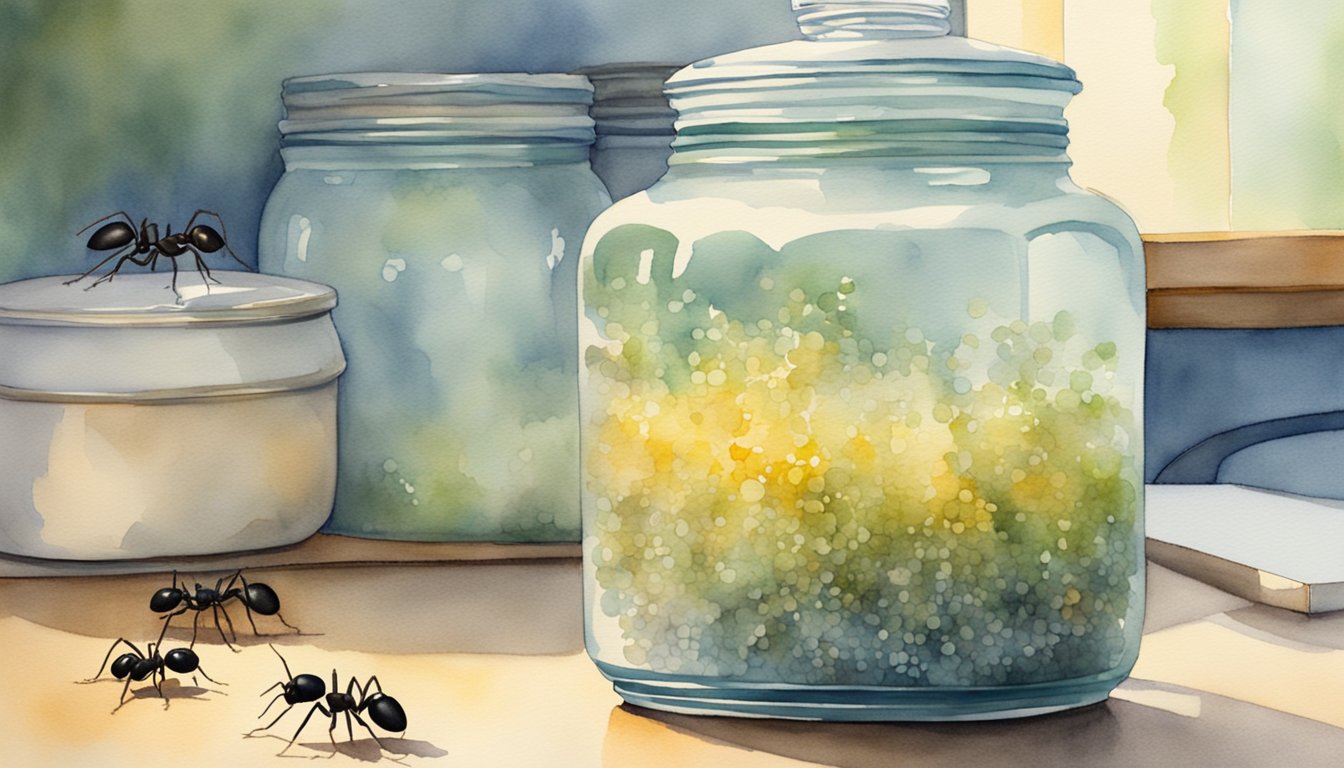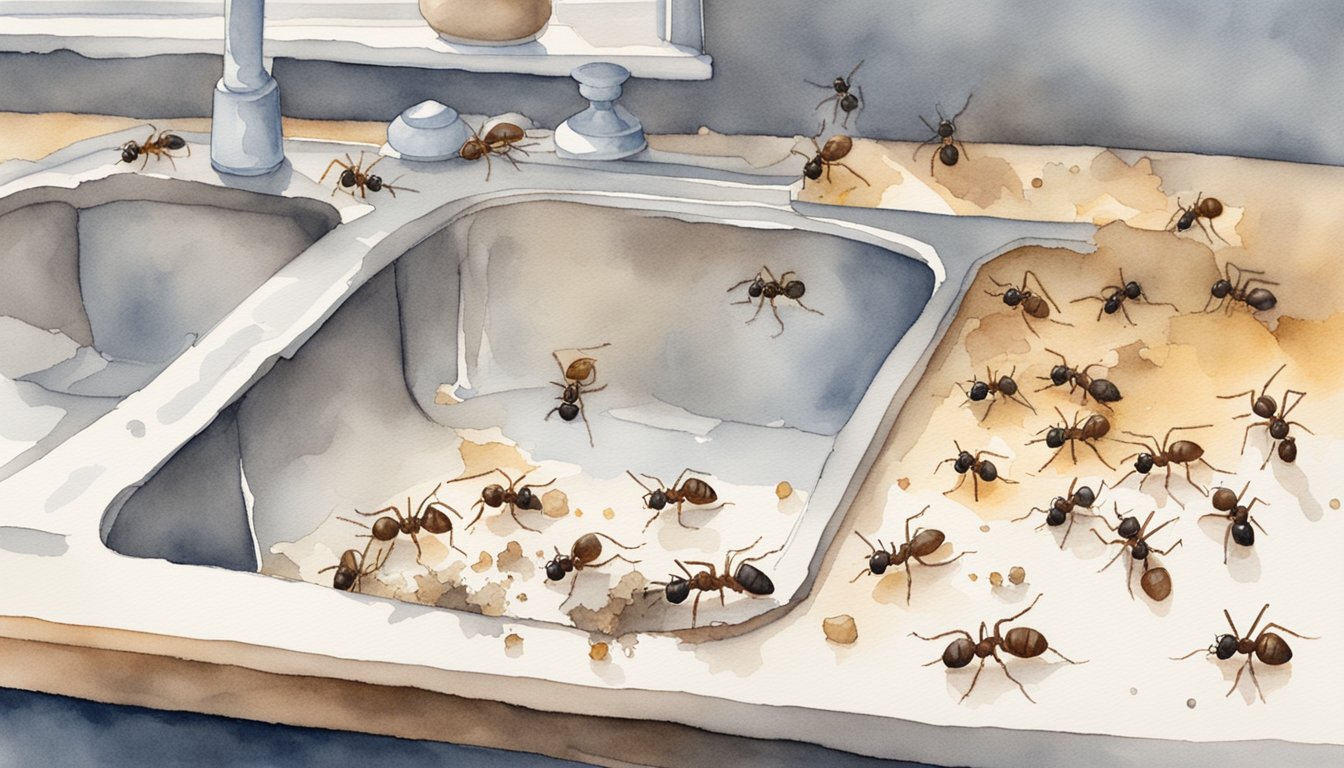Understanding House Ant Infestations

House ant infestations can be puzzling and frustrating for householders. A key component in handling these tiny intruders is understanding why and how they enter homes. Several ant species, including the common black ants and the odorous house ant, are known for invading residential spaces in search of food and shelter.
Ants live in highly structured social units known as colonies. A colony can house thousands, with roles divided amongst queen, workers, and others. The queen’s sole job is to lay eggs, while workers perform tasks like foraging and nest maintenance. Interestingly, after rain or during summer when temperatures rise, ants may move indoors to find a drier or cooler environment.
Ants are attracted to the reliable shelter and food sources found within a home. They often enter through the smallest entry points and establish ant nests hidden from human eyes. Ants communicate and navigate by laying a pheromone trail, a scent mark that guides other ants to food sources, potentially leading to a full-blown infestation.
Biodiversity within homes often goes unnoticed, but studies, like the one conducted by PeerJ, have started to shed light on the intricate ecosystems these tiny creatures form indoors. Ants are just a small part of this domestic biodiversity but can become a significant concern when their numbers grow.
To prevent ant nests from being established, homeowners should seal up cracks, keep food in tightly sealed containers, and eliminate standing water around the house. Knowledge about the behavior and preferences of different ant species, like those detailed in studies about the odorous house ant, can be incredibly helpful in tackling these unwanted guests.
Effective Ant Control Strategies
When it comes to ridding your home of tiny ants, understanding their behavior is key to implementing effective control strategies. It’s not just about combatting the ants present in the house but also about disrupting their colonies and preventing future invasions.
Identification and Removal
Properly identifying the ant species can significantly enhance control efforts. For instance, the Argentine ant is known for its vast colonies and sweet tooth, hence sugar-based baits can be especially effective. Locating and eradicating the nests involves following the distinctive ant trails that usually run along kitchen counters or bathroom tiles. Once trails are found, bait traps can be set along these paths. In some cases, physical removal through vacuuming can help decrease immediate numbers.
Preventive Measures
To keep ants at bay, eliminate any potential food sources in the kitchen and areas where food is consumed. Keeping surfaces clean of crumbs, spills, and food residues is fundamental. Ants also scope out water sources, so fixing leaks in pipes and ensuring that the sink isn’t a moisture haven will deter them. Sealing off entry points, such as gaps around doors and windows, can prevent ants from entering the home. Storing food in airtight containers and maintaining regular waste disposal helps maintain a clean environment that is less attractive to ants.
Natural Remedies and Alternatives
Many homeowners prefer non-toxic solutions such as diatomaceous earth for its ability to damage the exoskeletons of ants. Natural deterrents like vinegar, cinnamon, peppermint, or bay leaves can create inhospitable conditions for ants due to the strong scents. Applying a mixture of powdered sugar and boric acid on an index card is a popular homemade bait trap. Others have found success with concoctions of corn syrup and borax or cotton balls soaked in a mixture of warm water and white vinegar. It’s important to consider the safety of pets when using these methods.
Implementing these strategies can greatly reduce the presence of tiny ants in the house. In more severe cases, consulting with a pest control professional may be necessary to address the problem effectively.
Common Ant Species and Habitats

When uninvited tiny guests hurry along kitchen counters or floors, they’re often part of a larger, complex society that has brilliantly adapted to living alongside humans. Different species of ants have evolved to thrive in our homes, often seeking food, shelter, or both.
Typical Indoor Species
Typical indoor ant species, each with unique characteristics, can become common unwelcome housemates. For example, odorous house ants emit a coconut-like smell when crushed and are fond of sweet substances. Then there are the pharaoh ants, known for their love of warmth, making indoor environments ideal for these tiny yellow critters. Carpenter ants, distinguishable by their larger size, can cause structural damage as they tunnel through wood to build their nests. Other familiar trespassers include the diminutive ghost ants, which prefer the humid conditions often found in kitchens and bathrooms, as well as black ants, common invaders that march indoors in search of food scraps.
Ants live in a structured society with a single or multiple queens, numerous workers, and, depending on the species, additional roles that contribute to the complexity of their society. They build intricate nests providing shelter and a place to raise their young, which can be found within walls, in cracks, or amidst clutter.
Interaction with Environment and Other Insects
Ants play a critical role in biodiversity and ecosystem health by aerating soil, distributing seeds, and interacting with other species. In the home, ants can inadvertently protect plants by fending off other insects, but they may also farm aphids for their sweet secretions, showcasing a remarkable environmental adaptability.
Within the home, these ant species may cross paths with other insects, either as competitors for resources or, in some cases, predators. The multitasking fire ants, for example, are notorious for their aggressive behavior and impactful sting, making them a considerable nuisance both indoors and outdoors.
Seasonal Behavior Patterns
Ants exhibit different behavior patterns aligned with seasonal changes. During summer or warmer temperatures, ant activity often increases as they forage for food and expand their colonies. Rain can also play a role, driving ants to seek shelter indoors. Households may note an uptick in ant visitors during these conditions as the insects exploit entry points like cracks or crevices to access the relative safety and bounty within human habitations.

